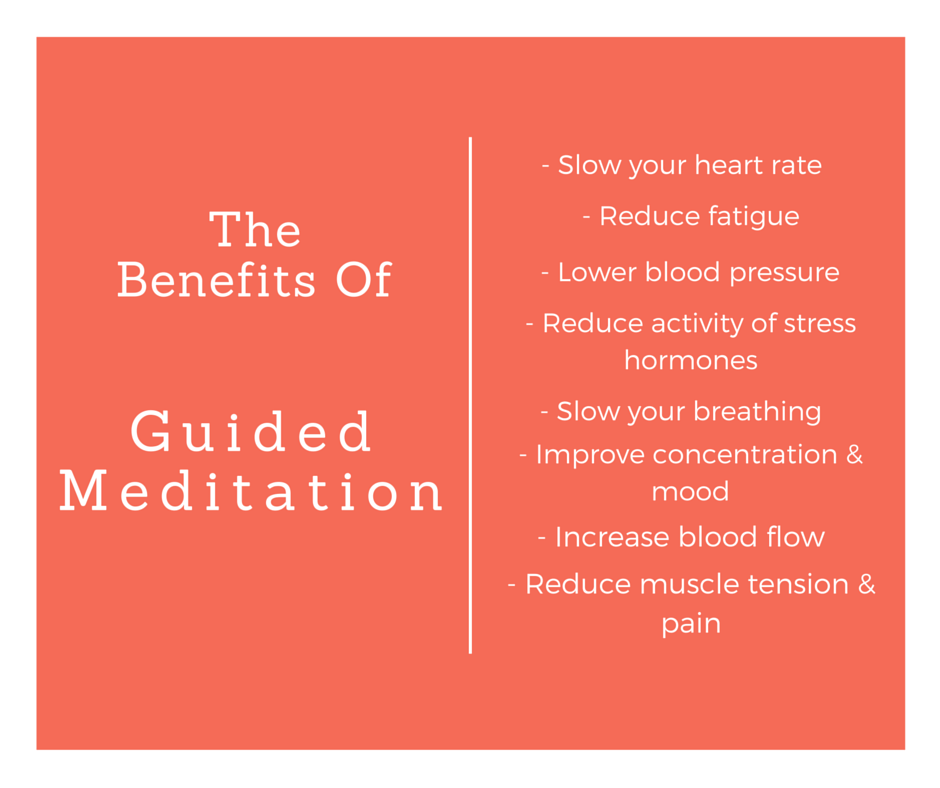Guided imagery is a powerful tool in the arsenal of mental health treatments. Using guided imagery, you can create or access an image that contains your ideal life and then work to manifest it in this world. It is helpful for people suffering from depression, anxiety, PTSD, and other mood disorders.
This article will explore what Guided Imagery is, how it works, and its effectiveness as a treatment option for many psychological conditions.
Contents
- 1 What is Guided Imagery?
- 1.1 How Does Guided Imagery Work?
- 1.2 Benefits of Guided Imagery
- 1.3 Issues Treated with Guided Imagery
- 1.4 Techniques For Guided Imagery
- 1.5 How To Start?
- 1.6 How To Keep Going With Guided Imagery?
- 1.7 Effect Of Guided Imagery On Human Body
- 1.8 Tips For Beginners
- 1.9 Cons of Guided Imagery
- 1.10 Limitations of Guided Imagery
- 2 Conclusion
What is Guided Imagery?

Guided imagery is a form of positive thinking that uses an image or series of images to create mental, emotional, and/or physical change. It encourages people to use their imagination in a focused way while working with a facilitator who guides them through the process. The person employs all five senses as they imagine different scenarios within the process.
How Does Guided Imagery Work?
The brain is an incredible organ that can change and grow throughout our lives. Using guided imagery, you can encourage your brain to form new connections and pathways. This happens as you imagine yourself in different scenarios using all five senses. The more often you do this, the stronger these pathways will become.
When you practice the techniques, you are doing two things:
- You are increasing the ability of your brain to think positively.
- You are teaching your brain how to form new pathways and connections.
Both of these things are incredibly beneficial for people suffering from mood disorders such as depression and anxiety as well as people suffering from Post Traumatic Stress Disorder (PTSD).
Benefits of Guided Imagery

Because it uses your imagination and encourages the brain to think positively, guided imagery has many benefits:
- Decreased anxiety and depression: One study found that after eight sessions, patients with anxiety and depression had fewer symptoms.
- Improved physical health: People who do guided imagery have been shown to have better physical health. Imagining things can make you feel good about yourself. If you imagine the life you want, your brain is learning to think positively. This can lead to better physical health outcomes as well.
- Enhanced self-esteem: If you imagine yourself in positive scenarios and use all five senses, your self-esteem will grow and you will feel good. It is because you think good things about yourself and that you can do what you want to do.
- Reduced stress: A study showed that after people listened to guided imagery they had less cortisol in their saliva. This is just one example of how guided imagery can help to reduce stress in your life.
- Improved sleep: People who practice it often report improved sleep quality and duration. This is likely because when you are positively using your imagination, it can help to calm and relax your mind.
- Better focus: When you practice the techniques, you are training your brain to focus on the task at hand. This is beneficial for people who struggle with focus issues or ADHD.
- Increased sense of well-being: People who practice it often report feeling a sense of well-being and peace. This may be because you are taking time each day to focus on yourself and your happiness.
- Increased creativity: Guided imagery can also help you to tap into your creativity. This might be because when you use it, your brain can access more information.
These are just a few of the benefits that people can experience when practicing guided imagery. There are many more things that it can do for your condition. If you want to know what they are, call our office and we can help you.
Issues Treated with Guided Imagery

People use Guided Imagery for a wide range of issues.
- Generally speaking, people suffering from mood disorders such as depression and anxiety benefit greatly from guided imagery practice.
- People with PTSD also find it helpful to work through their traumatic experiences. The process of guided imagery helps them to regain control over things that feel out of their control.
- It can also be used to help people quit smoking, manage pain, and prepare for surgery.
- In addition, pregnant women often use the therapy to connect with their unborn child and promote a healthy pregnancy.
Techniques For Guided Imagery

There are many different types of guided imagery.
A few of the most common ones include:
- Travel Imagery – Imagine yourself traveling to a new place. Imagine what you would see, hear, taste, touch, and smell.
- Visualization – creating or accessing an image that contains your ideal life and then working to manifest it in this world
- Nature Imagery – Imagining yourself in a natural setting such as the beach or mountains. Using all five of your senses, you can create a picture in your mind of this peaceful place. Then you can relax and make yourself feel better.
- Mindfulness Practice – Working with guided imagery is often done along with mindfulness techniques. They both focus on the present moment.
- Focused Attention – This is a type of guided imagery where you focus on one specific thing such as your breath or a certain sound. This can help calm the mind and relax the body.
- Creative Imagery – Using your imagination to create images that are not based on reality. This type of imagery can be used for a range of purposes including entertainment and self-expression.
Guided imagery is a wonderful way to enhance your life by creating positive change in the mind, body, and spirit. It can help your mental health and wellness. You could talk to a therapist or work with books, recordings, or both.
How To Start?

There are several different ways to get started with guided imagery. You can:
- Develop your practice and record yourself guiding yourself through the process (you can also do this on audio)
- Read books that include instructions for using Guided Imagery
- Record an online session with someone who is trained in offering these types of sessions
- Take a class in person or online
- Find guided imagery recordings on YouTube and other sites.
- You can also work with a therapist who is experienced in using this approach to mental health. If you have access to an arts center, there are often classes available where you can get started right away!
It has been used for centuries to help people connect with their inner selves and promote healing.
How To Keep Going With Guided Imagery?
There are many ways to keep going with Guided Imagery. Here are a few things you can do:
- Find and use new guided imagery recordings or create your content by following along with an online guide like this blog article!
- Create different types of exercises. Make them short and long, simple and complex depending on what works for you.
- Incorporate mindfulness techniques into your practice.
- Share your experiences with others who are also using guided imagery or talk to a therapist about how it’s going for you.
There is no wrong way to do Guided Imagery, so experiment and find what works best for you!
Effect Of Guided Imagery On Human Body

Guided imagery has a profound effect on the human body.
- When you use the technique, your brain waves change from the Beta state to the Alpha and Theta states.
- This means that you are entering into a more relaxed and receptive state where positive changes can take place.
- If you focus on happy or positive things, your body will release chemicals that can improve mood, feel good, and even help the immune system.
- Guided imagery is a wonderful way to relax the mind and body, promote positive change, and enhance overall health and wellness. Give it a try today and see how you feel.
Tips For Beginners
If you are just getting started with the therapy, there are a few things that can help. Here are some tips for beginners:
- Determine what type of experience you want to have using this approach. Are you looking to relax the mind and body or heal from an illness? Do you need to calm your thoughts before bed or focus on a specific task?
- Start with simple exercises and work your way up to more complex ones.
- When you are first starting, it is best to practice for short periods until you get used to the process.
- Be patient! It takes time and practice to be effective.
- If you are working with a therapist or taking a class, follow their guidance and don’t be afraid to ask questions.
- Remember that there is no wrong way to do it!
Cons of Guided Imagery
There are a few potential cons to using guided imagery. These include:
- You may find it difficult to focus on the images and experiences you are imagining.
- If you are working with a therapist or taking a class, the cost can add up over time.
- Some people feel overwhelmed by the number of choices available or do not feel confident enough to start their practice.
Limitations of Guided Imagery

Guided imagery is not perfect for every situation. Here are some limitations to keep in mind:
- People who struggle with dissociative disorders may find the process difficult or triggering. If this describes you, seek out other alternatives like mindfulness techniques instead of some suggested exercises.
- If you have an illness that requires surgery, it is best to stop using it for a few weeks before and after the surgery.
- Pregnant women should also avoid using it, as some exercises may be unsafe for the baby.
Despite these limitations, it is a powerful approach to mental health that can benefit many people. Give it a try today and see how it works for you!
Conclusion
Guided imagery is a great way to reduce stress, increase your mental focus and stimulate creativity. It can help you find peace of mind or work through complicated problems. However, if you want to use more of it in your life, do this exercise the next time you feel anxious or stressed. Close your eyes and imagine a cave or forest with only one entrance. Imagine that at the end of it there’s something peaceful waiting for you–such as flowing water, lush greenery, or even just another room where all of your favorite things are located. Stay focused on these images until they take over everything else around them; then open up your eyes again feeling refreshed and calmed down!
If you are looking for affordable Online Counseling MantraCare can help: Book a trial therapy session


